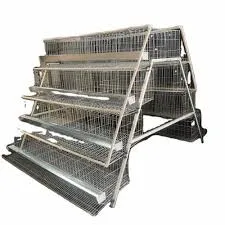Optimal Feed Mill Mixer Solutions for Enhanced Livestock Nutrition and Efficient Production Processes
សីហា . 14, 2024 12:46 Back to list
Optimal Feed Mill Mixer Solutions for Enhanced Livestock Nutrition and Efficient Production Processes
The Feed Mill Mixer An Essential Component in Animal Nutrition
Feed mills play a crucial role in the agricultural industry by providing balanced diets for livestock, poultry, and other animals. Among the various components of a feed mill, the feed mill mixer stands out as an essential piece of machinery that ensures that feed ingredients are blended thoroughly to meet the nutritional needs of animals. This article explores the importance of feed mill mixers, their types, and their impact on the quality of animal feed.
Importance of Feed Mill Mixers
The primary purpose of a feed mill mixer is to combine various feed ingredients uniformly
. Animal nutrition requires precise formulations that include proteins, carbohydrates, vitamins, and minerals. Any inconsistencies in the mixing process can lead to animal health issues, suboptimal growth rates, and reduced productivity. Therefore, a high-quality mixer is vital to achieving a homogenous blend that ensures all animals receive the required nutrients in every bite.In addition to nutritional consistency, efficient mixing aids in the utilization of feed resources. When feed is mixed uniformly, animals can digest it more effectively, leading to improved feed conversion ratios and lower feed costs. This efficiency is particularly important in large-scale operations, where even small improvements in feed utilization can lead to significant savings and higher profits.
Types of Feed Mill Mixers
Feed mill mixers come in a variety of designs, each suited to specific operations and feed types. The most common types include
1. Horizontal Mixers These mixers have a horizontal mixing chamber where ingredients are mixed using a set of blades or paddles. They are known for their efficiency in creating homogeneous mixtures quickly and are widely used in commercial feed mills.
feed mill mixer

2. Vertical Mixers Unlike horizontal mixers, vertical mixers consist of a vertical chamber where the mixing occurs. They are particularly effective for incorporating large volumes of bulk ingredients and are favored for their ability to handle minimal moisture levels.
3. Batch Mixers These mixers operate in discrete batches, allowing for greater flexibility in feed formulations. They are ideal for smaller operations or specialized rations and help reduce the risk of cross-contamination between different feed types.
4. Continuous Mixers Designed for large-scale operations, continuous mixers operate as a continuous flow system, allowing for constant mixing of ingredients. This type of mixer is efficient for large volumes but requires careful monitoring and control to ensure quality.
Impact on Feed Quality
The quality of the mixed feed directly affects animal performance. Incomplete mixing can lead to nutrient segregation, where some animals receive more nutrients than others. This inconsistency can negatively impact growth rates and overall health, resulting in increased veterinary costs and decreased production.
Moreover, effective mixing aids in the incorporation of additives such as vitamins, minerals, and medications, ensuring that these essential components are evenly distributed throughout the feed. This uniform distribution maximizes the efficacy of these additives and promotes optimal animal health.
Conclusion
In conclusion, the feed mill mixer is a pivotal component in the production of high-quality animal feed. By ensuring uniform mixing of ingredients, these machines contribute not only to the nutritional value of the feed but also to the overall efficiency and profitability of livestock production. As agricultural demands continue to evolve, the importance of advanced mixing technologies will only grow, highlighting the need for ongoing innovation in feed mill equipment. Investing in high-quality mixers is not just a matter of equipment choice; it is essential for the sustainable development of animal agriculture and the health of the animals we rely on.
-
Automatic Feeding Line System Pan Feeder Nipple Drinker|Anping County Yize Metal Products Co., Ltd.
NewsJul.30,2025
-
Automatic Feeding Line System - Anping Yize|Pan Feeder,Nipple Drinker
NewsJul.30,2025
-
Automatic Feeding Line System - Anping County Yize Metal Products Co., Ltd.|Pan Feeder, Nipple Drinker
NewsJul.30,2025
-
Automatic Feeding Line System-Poultry Farming|Chicken Feeding&Watering
NewsJul.30,2025
-
Automatic Feeding Line System - Anping County Yize Metal Products Co., Ltd.|Pan Feeder Nipple Drinker,Broiler Farming
NewsJul.30,2025
-
Automatic Feeding Line System Pan Feeder Nipple Drinker-Anping County Yize Metal Products Co., Ltd.
NewsJul.30,2025






